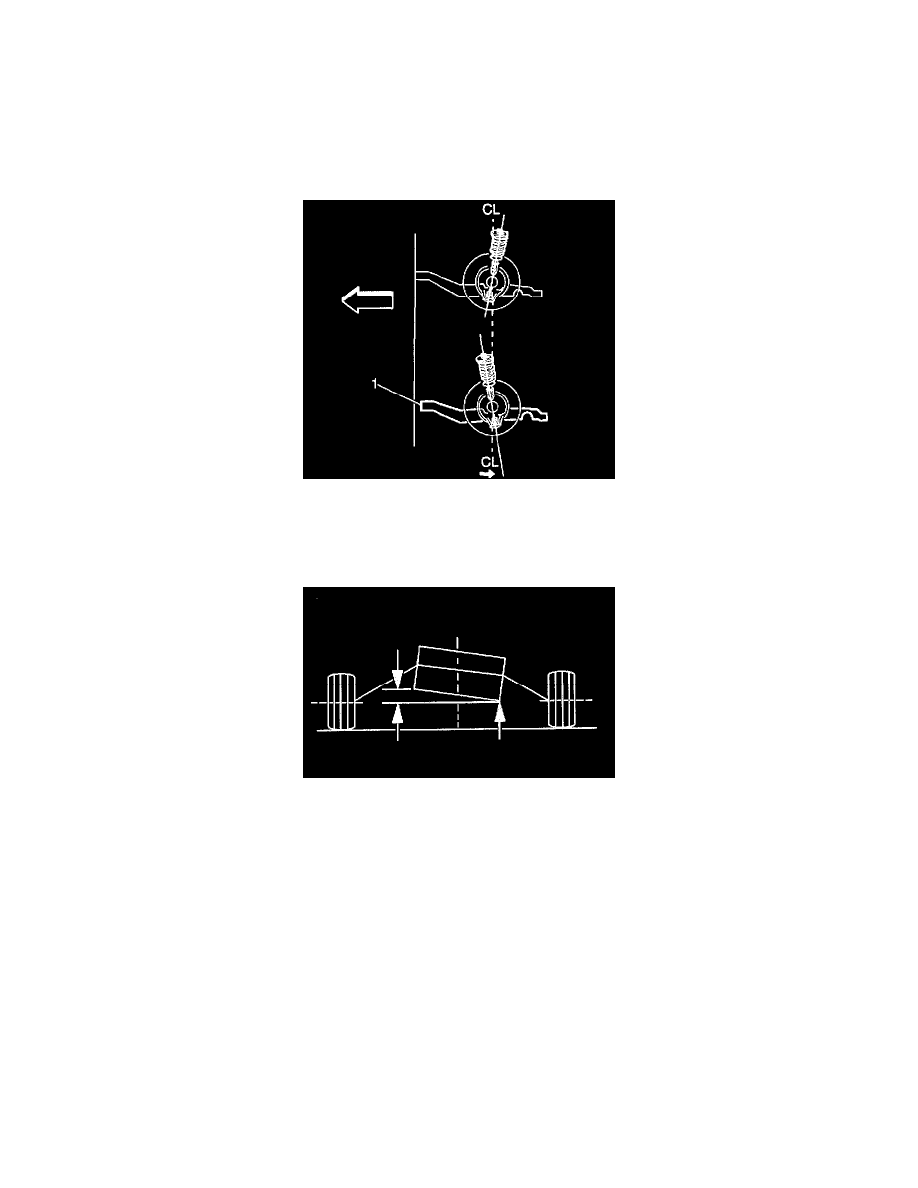Monte Carlo V6-3.4L VIN E (2000)

Description in Wheels, Tires and Alignment.
2. Uneven parking brake adjustment. Refer to Park Brake Cable Service/Adjustment in Brakes.
3. Wheel Alignment
The way in which a tire is built may produce lead. Rear tires do not cause lead.
Memory Steer Description
Memory steer is when the vehicle wants to lead or pull in the direction the driver previously turned the vehicle. Additionally, after turning in the
opposite direction, the vehicle will want to lead or pull in that direction.
Setback Description
Setback applies to both the front and the rear wheels. Setback is the amount that one wheel spindle may be aligned behind the other wheel spindle. In
the illustration, the left side frame (1) is moved toward the rear, causing a misalignment. Setback may be the result of a road hazard or a collision. The
first clue is a caster difference from side-to-side of more than one degree.
Torque Steer Description
A vehicle pulls or leads in one direction during hard acceleration. A vehicle pulls or leads in the other direction during deceleration.
The following factors may cause torque steer to be more apparent on a particular vehicle:
-
A slightly smaller diameter tire on the right front increases a right torque lead. Inspect the front tires for differences in the brand, the construction,
or the size. If the tires appear to be similar, change the front tires from side-to-side and retest the vehicle. Tire and wheel assemblies have the most
significant effect on torque steer correction.
-
A large difference in the right and left front tire pressure
-
Left-to-right differences in the front view axle angle may cause significant steering pull in a vehicle. The pull will be to the side with the most
downward sloping axle from the differential to the wheels. Axles typically slope downward from the differential. The slope of the transaxle pan to
level ground may be used as an indication of bias axle angles. The side with the higher transaxle pan (shown on the left side of the illustration) has
the most downward sloping axle angle.
Wander Description
Wander is the undesirable drifting or deviation of a vehicle toward either side from a straight path with hand pressure on the steering wheel. Wander is
a symptom of a vehicle's sensitivity to external disturbances, such as road crown and crosswind. A poor, on-center steering feel accentuates a wander
condition.
